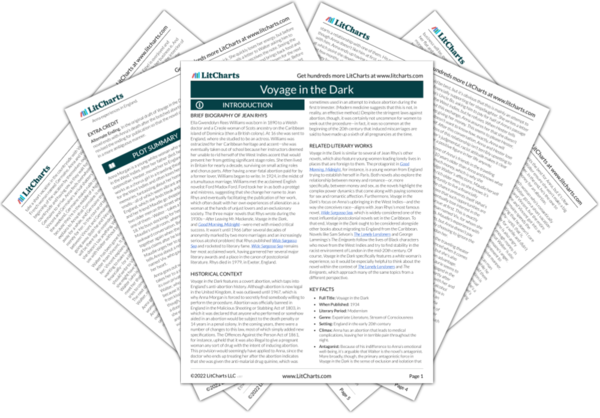Voyage in the Dark is similar to several of Jean Rhys’s other novels, which also feature young women leading lonely lives in places that are foreign to them. The protagonist in
Good Morning, Midnight, for instance, is a young woman from England trying to establish herself in Paris. Both novels also explore the relationship between money and romance—or, more specifically, between money and sex, as the novels highlight the complex power dynamics that come along with paying someone for sex and romantic affection. Furthermore,
Voyage in the Dark’s focus on Anna’s upbringing in the West Indies—and the way she conceives race—aligns with Jean Rhys’s most famous novel,
Wide Sargasso Sea, which is widely considered one of the most influential postcolonial novels set in the Caribbean. To that end,
Voyage in the Dark ought to be considered alongside other books about migrating to England from the Caribbean. Novels like Sam Selvon’s
The Lonely Londoners and George Lammings’s
The Emigrants follow the lives of Black characters who move from the West Indies and try to find stability in the racist environment of London in the mid-20th century. Of course,
Voyage in the Dark specifically features a
white woman’s experience, so it would be especially helpful to think about the novel within the context of
The Lonely Londoners and
The Emigrants, which approach many of the same topics from a different perspective.
